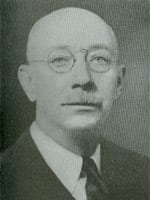Throughout The Individualistic Concept of the Plant Association, Gleason makes several arguments as to what the particular issues are with a term as broad as “association”. The essay states that previous descriptions of plant associations are mistaken due to their attempts to fit within existing frameworks which were developed when less information was available, and that, instead, as new information becomes available, new frameworks should be developed. Due to the use of what Gleason might have called antiquated frameworks ecologists were making undue reaches as to the conclusions implied by their research. Gleason suggests a new model based upon the individual plant.
A plant association is defined by Gleason as “an area of vegetation, having a measurable extent, in which each of which there is a high degree of uniformity throughout, so that any two small portions of one of them look reasonably alike.” One of the main issues with this definition is that there may be a continuous stretch of grassland from Illinois to Nebraska, but the easternmost and westernmost portions have vast differences. Is it to be considered one association due to the continuous stretch of grassland, or two associations due to the multitude of smaller differences in species? If it is to be considered two associations, where should that “measurable extent” extend to if each square mile is almost indistinguishable from the next and it is only at great distances that a difference can be quantified? For another example, Gleason speaks of woodlands. Without human interaction, a woodland’s advance or retreat into or from a particular grassland would be so slow as to make it impossible to define clearly a time-boundary on when the association began or ended in a particular locale. Additionally, Gleason states, that, particularly in growth after a fire, an association may be so brief that there is never a period of equilibrium. Gleason then calls an association effectively a coincidence.
To back up this claim, Gleason explains, in simple terms, how plant life comes to be in an area; “if I viable seed migrates to a suitable environment, it germinates.” No matter how far it has traveled, whether on the wind, in an animal’s digestive system or on its fur, by stream, or any other manner, if a seed comes to rest someplace that can provide the right amount of sun, nutrients, and water, it will grow. The majority of seeds land relatively nearby the parent plant, and fewer and fewer do in concentric rings traveling outward from that plant. Thereby, Gleason contends, every plant germinates wherever it is able and grows in proximity to other vegetation with similar environmental needs. Plant associations as popularly defined by ecologists of the time were an attempt at ascribing monolithic order to a system containing billions and billions of free agents in the form of each individual plant attempting to grow and spread.
My personal thoughts on this writing are that it was an interesting idea and helped me to understand not only Gleason’s ideas but also other ecologists’ definition of a plant association. I largely agree with Gleason’s concept, however understand the utility of grouping vegetation into associations for the sake of study. Aside from all that, I thought Gleason’s clarity of voice made reading this essay easy and enjoyable.

